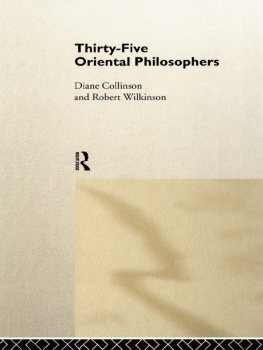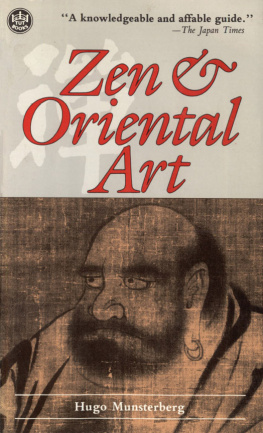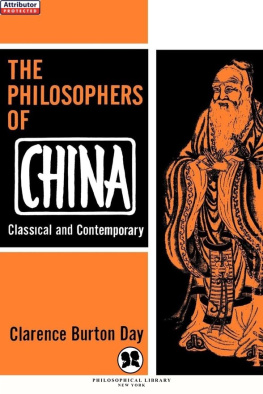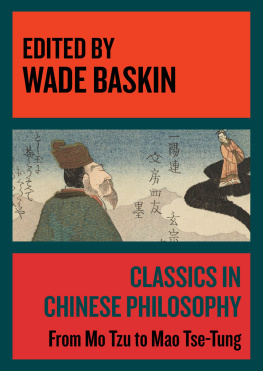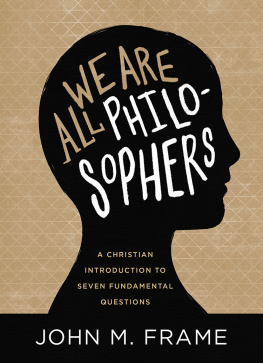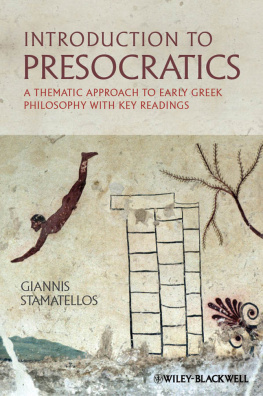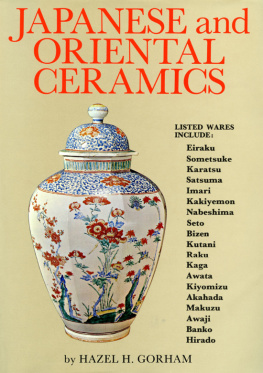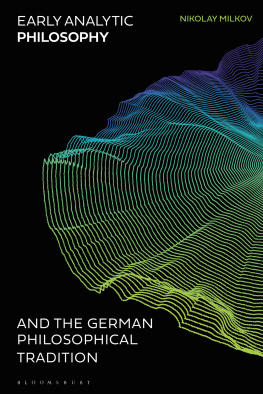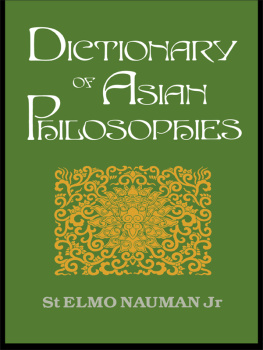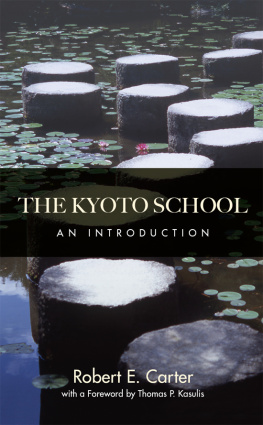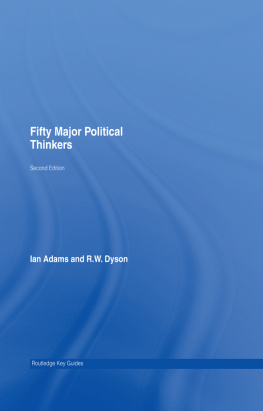Thirty-Five Oriental Philosophers
First published 1994
by Routledge
11 New Fetter Lane, London EC4P 4EE
Simultaneously published in the USA and Canada
by Routledge
29 West 35th Street, New York, NY 10001
Routledge is an imprint of the Taylor & Francis Group
This edition published in the Taylor & Francis e-Library, 2001.
All rights reserved. No part of this book may be reprinted or reproduced or utilized in any form or by any electronic, mechanical, or other means, now known or hereafter invented, including photocopying and recording, or in any information storage or retrieval system, without permission in writing from the publishers.
British Library Cataloguing in Publication Data
Collinson, Dian and Wilkinson, Robert
Thirty-Five Oriental Philosophers
I. Title II. Wilkinson, Robert
181
Library of Congress Cataloging in Publication Data
Thirty-Five Oriental Philosophers / Dian Collinson and Robert Wilkinson
p.cm.
Includes bibliographical references.
1. Philosophy, Oriental. 2. Asia Religion. 3. Philosophers Asia Biography. 4. Religious biography Asia.
I. Wilkinson, Robert II. Title.
B5005.C65 1994
181dc2093-26262
ISBN 0-415-02596-6 (Print Edition)
ISBN 0-203-02935-6 Master e-book ISBN
ISBN 0-203-17405-4 (Glassbook Format)
INTRODUCTION
This book is designed to give the interested reader basic information about thirty-five major thinkers who belong with those several different traditions usually classed together by western culture as Oriental.
One of the major points which will become clear is that this classification is oversimple, since it blurs distinctions between a number of schools of thought, some as different from each other as they are from the schools of the West. We have organized the material, with the exception of that on Islamic philosophy, under headings which are broadly geographical, and this arrangement coincides, by and large, with organization by philosophical tradition. Within each group of philosophers the material is set out chronologically. For the sake of simplicity, all dates are given in terms of the Christian calendar.
Differences between them notwithstanding, there is one feature common to these traditions at least before the modern period which they do have in common and in which they do differ from philosophical thought in the West since the Renaissance. This common characteristic is the non-separation of philosophical from religious endeavour. Most western philosophers of the present day would regard their subject as distinct from religion, though this would not have been the case, for example, in the Middle Ages. This distinction or outlook has appeared in eastern traditions, if at all, only very recently. The consequence is that in much of what follows the subject-matter is in many cases, of necessity, deeply informed by religious ideas. Whilst the emphasis in what we have written is on what in western terms is the philosophical aspect of the work of the figures concerned, those within these traditions would generally regard this as a distinction marking no difference of importance.
This book does not pretend to be a history of the schools of thought concerned; several libraries would be needed for that, even were all the primary source materials available. Rather, our chief aim has been to indicate the most influential and important lines of thought of each philosopher by close reference to major works, though we hope in addition that an indication of broad changes and constant features within each tradition will emerge from a consideration of each group of philosophers taken together.
Each essay follows a common plan: a short statement describing the main thrust of the thought of the philosopher concerned; information about his life, and concise expositions of some central aspects of his thought, with cross-reference, where appropriate, to other philosophers. These cross-references are not only to other Oriental thinkers but also to philosophers in the western tradition: the same philosophical problems have often generated similar lines of response wherever they have occurred, and we have indicated the most important of these in the text. Since, as we have indicated, the thinkers concerned belong to a number of traditions, we have included brief sub-introductions at appropriate points. These include basic historical and philosophical information needed to set the scene for the group of thinkers concerned. No living philosopher has been included in this book.
At the end of each essay we have provided information that can launch the interested reader into further, more detailed study. First, there are notes to which the numbers in the text refer; second, details of the philosophers principal writings; third, a list of other philosophers considered in this book whose thought relates in one way or another to that of the philosopher in hand; and fourth, a list of books suitable for further reading.
At the end of the book there is a short glossary of philosophical terms. It contains brief explanations of technical or semi-technical terms that occur a number of times in the book, where necessary in more than one language. For the most part it has been possible to give a brief explanation of such a term with its first use in the text, but it was not feasible to repeat the explanation with each subsequent use. These terms therefore appear in bold print on the first occasion of their use in an essay, and this indicates that they are explained in the glossary at the end of the book. The glossary entries should not be taken to be either final definitions or complete explanations of the terms they describe. They are meant to provide only a first foothold for a reader not familiar with the philosophical terrain.
One of the difficulties facing any student of Oriental thought is the variety of competing systems for the transcription of the various languages concerned, chiefly Arabic, Pali, Sanskrit, Tibetan, Chinese and Japanese. Our choices in this area have involved balancing a number of considerations, e.g. relative familiarity, pronounceability and scholarly authority. We have in the main followed options which will be familiar to scholars, e.g. Wade-Giles for Chinese, the Wylie system for Tibetan, and so on. However, we have not scrupled to deviate from any of the preferred systems in the interests of readability. Where alternative systems produce transcriptions so different as to be a source of possible confusion to those following paths indicated in the suggestions for further reading, we have included rival transcriptions in the notes. Words from foreign languages are printed in italics, except in the few cases where they are now used in English, e.g. Koran, Vedanta, Zen. Quite often, important terms have been translated into a number of the languages mentioned, especially as a result of the spread of Buddhism, and these equivalences are explained as necessary. In the text and glossary we have used the following shorthand to indicate the language from which a given term comes: A = Arabic; C = Chinese; J = Japanese; P = Pali; S = Sanskrit; and T = Tibetan. In one or two cases, we have used one term throughout. Thus Zen is always referred to by means of this its Japanese name, even though its roots lie in Chinese and Indian thought. These cases are noted in detail at appropriate points in the text.
The need to keep this book to a reasonable length has meant that we have had to omit some figures of importance, e.g. the Tibetan philosopher Tsong kha pa (13571419 CE), the Islamic thinker Ibn Arabi (11651240 CE), and representatives of the Hua Yen or Pure Land schools of Buddhism. We hope, however, that the figures we have been able to include will give a sense of the richness, subtlety and penetration of these great philosophical traditions.

